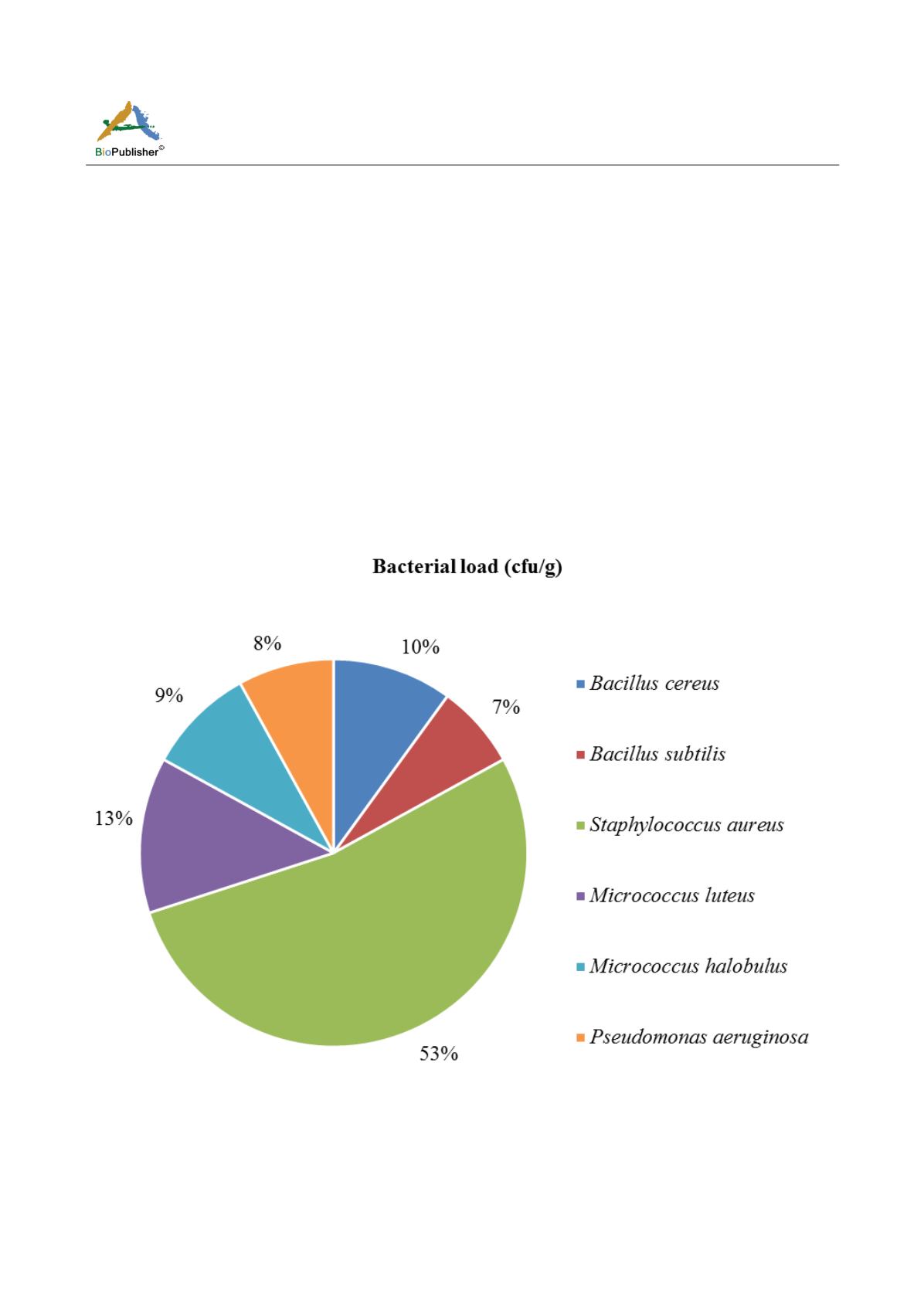
Bioscience Methods 2017, Vol.8, No.2, 18-30
27
The least pH was recorded for aluminum foil packaging ranging from (9.50 ±0.00 to 9.6 ±0.15) although with no
significant difference and had (p>0.05) bacteria count ranging from (10x10
2
±1.53 to 14x10
2
cfu/g ±3.00) and
fungi count ranging from (10x10
2
to 16x10
2
sfu/g ±3.51) with significant difference for all the treatments.
Brown paper packaging recorded the highest pH value 10.17±0.06 with significant difference. It recorded the
highest bacteria count 12x10
2
cfu/g ±5.00 while Polythene bag had the lowest pH value 9.97 ±0.12 and the
highest fungi mean count 15x10
2
sfu/g ±3.00 with significant difference for snacks without fortification.
Six bacteria and thirteen fungi were isolated and identified at the end of the storage period (Table 7).
The occurrence of microbes in the snack showed that both transient and resident strains were present. Occurrence
of microbes in the packaged snacks is presented in Figure 1 and Figure 2. The occurrence for bacteria revealed
that
Staphylococcus aureus
was the dominant organism, accounting for 53% of the total bacterial load. Seven
percent occurrence recorded for
Bacillus subtilis
was the least for bacteria. The untreated snack had the highest
microbial diversity. Of importance is the presence of
Pseudomonas spp
which is a common spoilage bacterium in
the sample. The dominant fungus in the sample is
Aspergillus spp
and it accounted for 45% of fugal population in
the samples. For fungi, the two percent occurrence recorded for
Trichoderma longibrachiatum, Candida sake,
and
yeast
was the least.
Figure 1 Percentage occurrence of bacteria isolated from snack samples


